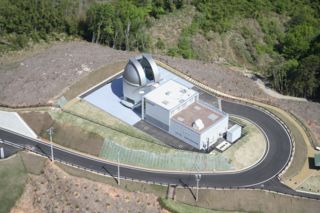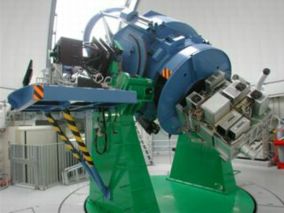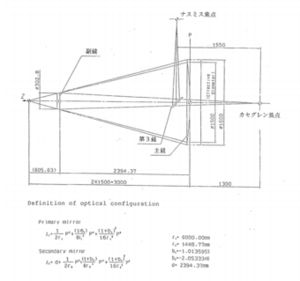

|
KANATA 1.5-m Optical and Near-Infrared telescope |
 |  |
| Higashi-Hiroshima Observatory | KANATA optical and NIR telescope |
The instruments for KANATA telescope are listed
here.
HASC promotes a research of high-energy astronomical objects, such as gamma-ray bursts,
blazars and X-ray binaries, based on multiwavelength observations with a combination
of KANATA telescope, Fermi gamma-ray satellite (named GLAST previously) and
Suzaku X-ray satellite observations.
We also promotes observational studies of other transient objects, e.g.,
supernovae, classical novae and dwarf novae, etc., with extensive
optical/NIR monitoring.
Links
Basic specifications
The values in the parentheses denotes those when the new ceramic
secondary mirror (developed by
JELT group of NAOJ) is used.
After 2007 July it is continuously attached to the telescope.
Optics Ritchey-Chretien System
Primary Mirror 1600 mm diameter ULE glass, 983 kg
Effective Diameter 1500 mm
Composite focal length 18,501.7 mm (F/12.3)
Field of View 15 arcmin diameter
Scale at Focal Plane 11.15 arcsec/mm
Mount Alt-Az system (friction drive)
Focus Cassegrain, Nasmyth 1, Nasmyth 2
Telescope Design

Optical Design

---> Top page of HASC